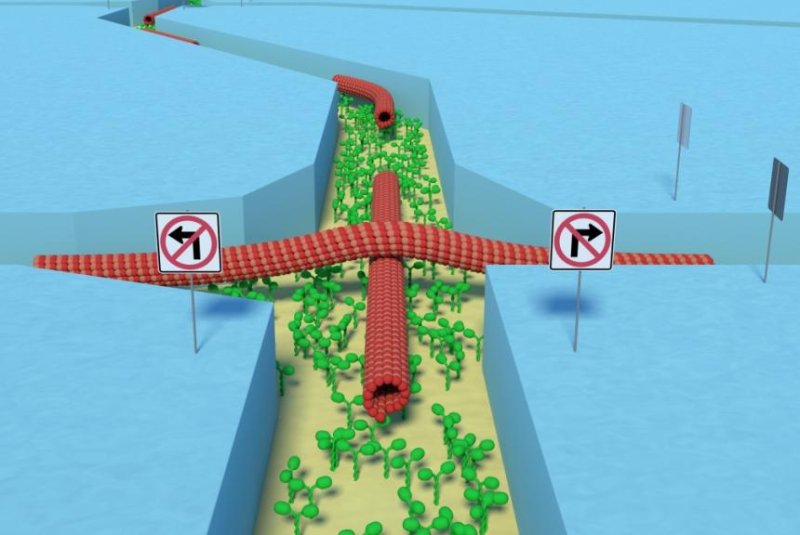Researchers have replicated the basic mathematical functionality and communication abilities of a supercomputer using biological materials. Photo by McGill University
MONTREAL, Feb. 26 (UPI) -- An international team of researchers have designed and built a model biological supercomputer powered by adenosine triphosphate, or ATP -- a biochemical sometimes called a "molecular unit of currency" because it enables the transfer of energy inside cells.
Instead of synthetic semiconducting circuitry etched atop a microchip, the newly developed model bio-supercomputer features tiny strings of protein powered by ATP.
The system mimics the basic mathematical functionality of supercomputers, but at a much smaller size. Most supercomputers are massive. The model developed by computer scientist Dan Nicolau and his partners is roughly the size of a book.
Because it is powered by biological agents, it uses far less energy and doesn't overheat.
The model isn't perfect, but scientists believe its supercomputing potential is immense.
"Now that this model exists as a way of successfully dealing with a single problem, there are going to be many others who will follow up and try to push it further, using different biological agents, for example," Nicolau, a computer scientists at McGill University in Canada, explained in a press release.
Though building a more complete supercomputer exclusively out of biological components remains the goal, hybridization may be necessary for more immediate success.
"One option for dealing with larger and more complex problems may be to combine our device with a conventional computer to form a hybrid device," Nicolau added. "Right now we're working on a variety of ways to push the research further."
The model is detailed in the latest issue of the journal PNAS.















